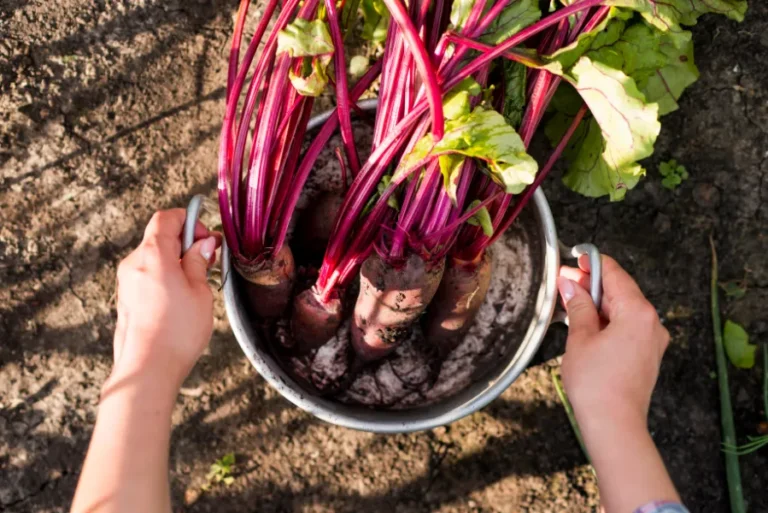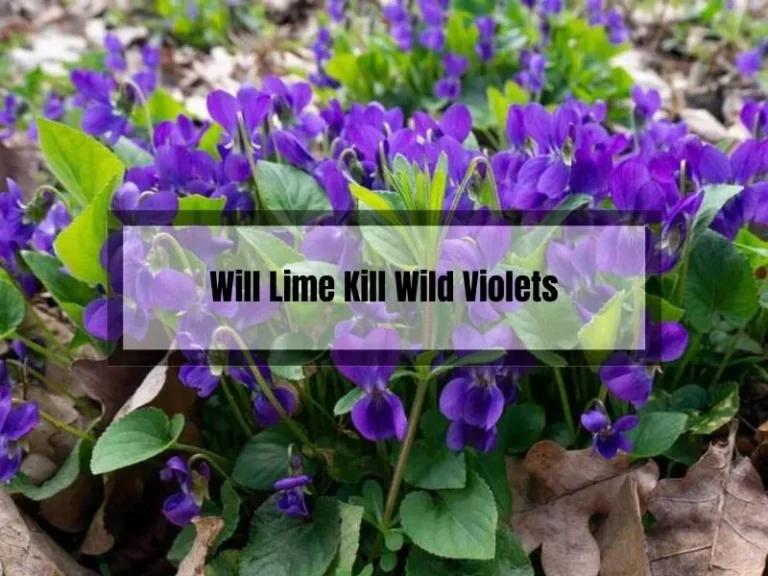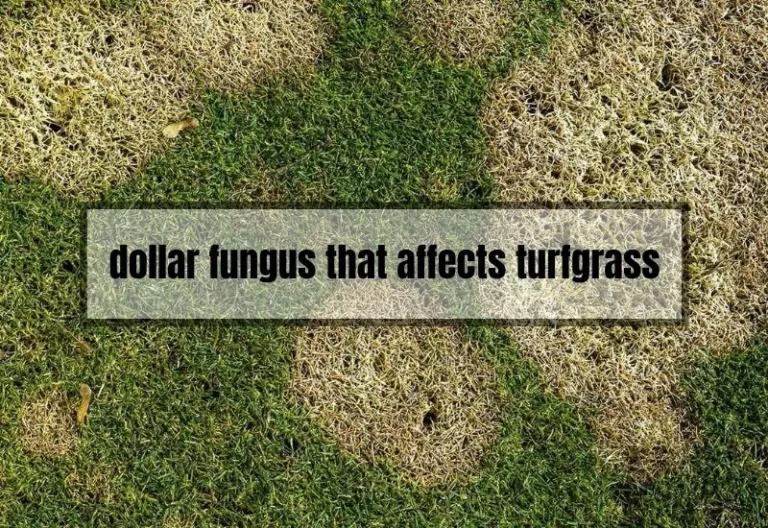Does Borax Kill Wild Violets? A Gardener’s Guide to Eliminating Weeds
Are wild violets taking over your lawn or garden? Many gardeners face this challenge.
Borax, a natural mineral with a history as a cleaning agent and pesticide, is often used as a DIY weed killer when mixed with water. Can it effectively eliminate wild violets, and if so, how does it work? Let’s find out. In this article, we’ll explore borax as a potential solution.
Key Takeaways
- Borax can be an effective weed killer for wild violets.
- Borax works by inhibiting plant growth and reproduction.
- When using borax, it’s important to follow safety measures and consider alternative methods for controlling wild violets.

Does Borax Kill Wild Violets
We all know how stubborn wild violets can be in our gardens or lawns. They can take over and be difficult to control.
But have you ever considered using borax to get rid of them? Yes, you heard it right! Borax can be an effective solution to kill wild violets.
Borax is a natural mineral that contains boron, which is toxic to plants in high concentrations. When borax is applied to the soil, it can kill the wild violets by drying them out. Borax is also effective in killing other weeds and grasses.
But before you start using borax, you need to be careful as it can also harm other plants if not used correctly. Here are some tips to help you use borax safely and effectively:
- Use borax in moderation. Applying too much borax can harm the soil and other plants in your garden or lawn.
- Mix borax with water to create a solution. A general rule of thumb is to mix 10 ounces of borax with 4 ounces of warm water for every 1,000 square feet of lawn or garden.
- Apply the solution to the affected area using a sprayer or watering can. Make sure to cover the entire area evenly.
- Wait for a few days to see the results. The wild violets will start to turn yellow and wilt.
- After a week, rake up the dead violets and dispose of them properly.
It’s important to note that borax is not a quick fix and may take a few applications to completely get rid of the wild violets. But with patience and persistence, borax can be an effective solution to control the wild violet invasion in your garden or lawn.
We had a wild violet problem in our garden last year, and we tried everything to get rid of them. We used different herbicides and even tried pulling them out by hand, but nothing seemed to work. Then we heard about using borax, and we decided to give it a try.
We followed the instructions carefully and applied the borax solution to the affected area. After a few days, we started to see the wild violets turn yellow and wilt. We continued to apply the solution for a few more weeks, and eventually, the wild violets were gone. We were thrilled with the results and would highly recommend using borax to control wild violets.
How Borax Works on Plants
As we mentioned earlier, Borax is an effective herbicide that can help you get rid of wild violets in your garden or lawn. But how does it work exactly? Let’s take a closer look.
Borax is a naturally occurring mineral that contains boron, a micronutrient that is essential for plant growth. However, when applied in large quantities, boron can be toxic to plants, causing them to die. This is how Borax works as an herbicide.
When Borax is applied to the soil, it is absorbed by the roots of the plants, which then transport it to the leaves and other parts of the plant. Once inside the plant, Borax disrupts the metabolic processes, causing the plant to die from the inside out.
It’s important to note that Borax is not selective in its herbicidal action, meaning it can kill any plant it comes into contact with, including desirable ones. Therefore, it’s essential to use Borax carefully and only on the plants you want to get rid of.
Here are some key things to keep in mind when using Borax as an herbicide:
- Borax is most effective when applied during the growing season when the plants are actively growing.
- It’s best to apply Borax on a dry, windless day to avoid drift and ensure maximum absorption by the plants.
- Be sure to follow the recommended dosage carefully, as too much Borax can be harmful to the soil and other plants in the area.
- It’s also a good idea to wear gloves and protective clothing when handling Borax, as it can cause skin irritation.
The Effect of Borax on Wild Violets
As avid gardeners, we know how frustrating it can be to deal with invasive plants like wild violets. These pesky plants can quickly take over our lawns and gardens, leaving us with a patchy, uneven landscape. But fear not, fellow gardeners, because we have found a solution to this problem: borax.
Yes, you read that right. Borax, the common household cleaner, can be an effective tool in controlling wild violets in your lawn and garden. But how does it work? Let’s take a closer look.
Borax contains boron, which is a naturally occurring mineral that can be toxic to plants in large doses. When applied to the soil, borax can inhibit the growth and spread of wild violets by disrupting their root systems. It also helps to raise the pH level of the soil, making it less hospitable to these plants.
But before you go sprinkling borax all over your lawn, it’s important to note that this method should be used with caution. Borax can be harmful to other plants and animals if used improperly, so it’s essential to follow the instructions carefully.
Here are some tips for using borax to control wild violets:
- Apply borax in the spring or fall, when the plants are actively growing.
- Use a spreader to apply the borax evenly over the affected area.
- Do not apply borax to areas where you plan to grow other plants, as it can remain in the soil for several years.
- Water the area thoroughly after applying borax to help it soak into the soil.
- Do not exceed the recommended dosage, as too much borax can be harmful to the environment.
By following these guidelines, you can effectively use borax to control wild violets in your lawn and garden. Remember, it’s important to use this method responsibly and with caution to avoid harming other plants and animals in the process.
So next time you’re faced with a wild violet invasion, give borax a try and see how it works for you. Happy gardening!
Safety Measures When Using Borax
When using borax to kill wild violets, it is important to take safety measures to ensure that you do not harm yourself, other people, pets, or plants. Here are some safety measures that we recommend:
Protective Gear
Wear protective gear such as gloves, goggles, and long-sleeved shirts when handling borax. This will prevent skin irritation and eye damage.
Proper Application
Apply borax only to the affected areas where wild violets are present. Do not apply borax to areas where other plants are growing, as borax can damage or kill them. It is also important to apply borax on a dry day when there is no rain forecasted for at least 24 hours.
Keep Children and Pets Away
Keep children and pets away from the area where borax has been applied. Borax can be harmful if ingested, so it is important to keep it out of reach of children and pets.
Proper Disposal
Dispose of borax properly after use. Do not pour it down the drain or throw it in the trash. Instead, mix it with water and pour it on a non-vegetative area, such as a driveway or sidewalk.
Alternative Methods
Consider using alternative methods to control wild violets if borax is not a suitable option for you. For example, you can manually remove the wild violets by digging them up or using a weeding tool.
By following these safety measures, you can effectively use borax to kill wild violets without harming yourself, other people, pets, or plants.
Alternative Methods to Control Wild Violets
While borax can be an effective solution to control wild violets, there are other methods you can try if you prefer not to use chemicals. Here are some alternative methods to control wild violets:
Hand Pulling
One of the easiest ways to control wild violets is by hand pulling them. Make sure to wear gloves and dig out the entire root system to prevent regrowth. This method can be time-consuming, but it is effective for small infestations.
Mowing
Mowing your lawn regularly can help control wild violets by preventing them from producing seeds and spreading. However, if the violets have already established themselves in your lawn, mowing alone may not be enough to eliminate them.
Soil Amendments
Wild violets thrive in acidic soil, so adding lime to your lawn can help raise the pH level and make it less hospitable for violets. On the other hand, if your soil is too alkaline, adding sulfur can help lower the pH level and discourage violets from growing.
Organic Herbicides
If you prefer to use a natural solution, there are organic herbicides available that can control wild violets.
These herbicides contain natural ingredients such as vinegar, clove oil, and citric acid, and are safe for the environment and pets. However, they may not be as effective as chemical herbicides and may require multiple applications.
Professional Lawn Care Services
If all else fails, you can always hire a professional lawn care service to help control wild violets. These services have access to more powerful herbicides and can provide ongoing maintenance to keep your lawn free of violets and other weeds.
Frequently Asked Questions (FAQs)
Can I use borax on other weeds and invasive plants?
Borax can be effective against various weeds and invasive plants, but its impact can vary depending on the plant species. Before using borax on other plants, research its effectiveness and potential risks for the specific plant you’re targeting.
How much borax should I use to kill wild violets?
The amount of borax needed can vary depending on the size of the area you’re treating and the severity of the wild violet infestation. It’s essential to follow the label instructions and not to exceed the recommended application rate, as using too much borax can harm the soil and other plants.
Is there a specific time of year when applying borax is most effective?
The best time to apply borax for wild violet control is during the plants’ active growth stage, typically in spring or early summer. Applying borax during this time can help ensure that the plants are more susceptible to the treatment and increase the likelihood of successful control.
Are there any non-toxic alternatives to borax for wild violet control?
Yes, there are several non-toxic alternatives for wild violet control, such as manual removal, smothering with mulch, or using vinegar-based solutions. However, these methods may require more time and effort compared to using borax or other chemical control options.
How long does it take for borax to kill wild violets?
The time it takes for borax to kill wild violets can vary depending on the application rate, the size of the plants, and environmental factors like temperature and rainfall. Generally, you can expect to see visible signs of wilting and plant decline within a few days to weeks after applying borax.
Conclusion
So, does borax kill wild violets? The short answer is yes – borax can be effective in controlling wild violets by disrupting their growth and reproduction. However, its long-term effectiveness is less certain, and it’s essential to weigh the potential risks and benefits before using borax as a wild violet control method.
In conclusion, the battle against wild violets may be challenging, but armed with the right information and tools, you can regain control of your garden and enjoy a beautiful, wild violet-free landscape. Good luck, and happy gardening!
Related Posts:




